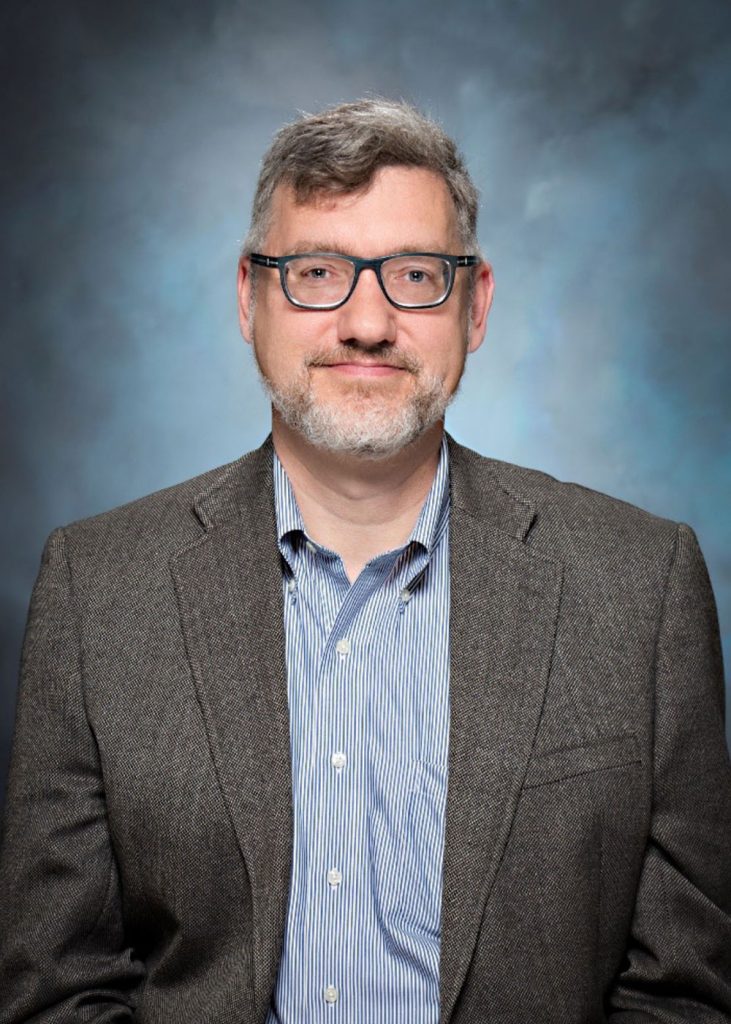Pathfinders in Science and Technology Series launches with talk on major scientific feat

is the program director for Weapon Science Research and Development at Lawrence Livermore National Laboratory. Sandia hosted Herrmann to present the research and impact of achieving fusion ignition for the first time, an achievement that occurred at the National Ignition Facility on Dec. 5. Herrmann’s presentation is the first in the Pathfinders in Science and Technology Series, organized by the Advanced Science and Technology division. (Photo courtesy of
Lawrence Livermore National Laboratory)
On March 22, Mark Herrmann, program director of Weapon Science Research and Development at Lawrence Livermore National Laboratory, visited Sandia to discuss the significance of a historic, first-ever demonstration of fusion ignition, which occurred at the National Ignition Facility on Dec. 5.
His presentation focused on the work behind the achievement, and its impact on NNSA’s Stockpile Stewardship and Management Program and the future of clean power. The experiment performed at the Lawrence Livermore facility enables experimental developments that help sustain U.S. nuclear deterrence.
“I want to highlight that this was an effort, six decades in the making, that involved thousands of people, many of whom have spent their entire career working on this. I’m just representing a small portion of the team, not just at Lawrence Livermore, but across the NNSA complex,” Herrmann said, noting that the achievement would not have been possible without many partnerships, including with Sandia.
His talk was the first in the Pathfinders in Science and Technology Seminar Series sponsored by Advanced Science and Technology.
“Kicking off this series at Sandia was one of my personal goals, and one I wanted to see come to fruition before I retired,” said Susan Seestrom, associate Labs director of Advanced Science and Technology. “Pathfinders highlights significant technical accomplishments achieved in science, technology and engineering across the country to motivate and excite Sandians. Having my colleague Mark Herrmann kick off the series and speak about the great science, technology and engineering associated with achieving ignition on the National Ignition Facility was fabulous because it resulted from a long-term vision in NNSA.”
Fusion ignition
Fusion ignition is achieved when as much or more energy is produced from a fusion reaction than was used to drive it. Herrmann and the National Ignition Facility team exceeded the threshold for fusion ignition inside the lab for the first time ever by generating an extreme environment. This work paves the way for advancements in national defense and potentially a fusion power energy plant.
“We are working on how to incorporate what we have learned to both repeat this experiment and go beyond it. We have plans to make the laser even more energetic, make the lasers hit the small targets better and make this easier. The more extreme the conditions, the better the fidelity of the experiments we are doing,” Herrmann said.
The pursuit of fusion
Most U.S. nuclear weapons were produced in the 1950s and 1960s and tested underground. Underground testing continued until 1992 when the Stockpile Stewardship and Management Program established a science-based approach to certifying the stockpile.
In 1992, a group of Lawrence Livermore scientists hypothesized that lasers could be used to induce fusion in a laboratory setting. To pursue this concept, Lawrence Livermore built a series of laser systems that led to the creation of the National Ignition Facility. Construction began in 1997, and the facility opened in 2009 to perform fusion experiments that support and maintain U.S. nuclear deterrence.
The National Ignition Facility is about the size of three football fields. There are 192 laser beams, each the most energetic lasers operating in the world today. The lasers concentrate onto targets about the size of a pencil eraser for a short period of time and create X-rays, which radiate and compress a small capsule that contains fusion fuel. By doing this, researchers can study the effects of compressed fusion fuel in a laboratory setting.
A recording of Herrmann’s talk can be viewed on the Pathfinders in Science and Technology Series webpage. There, staff can learn more about the Pathfinders Series and future speakers as they are announced.